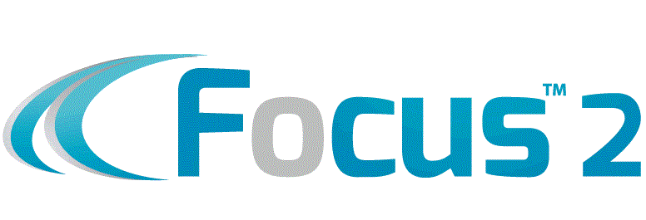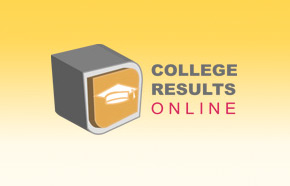Colleges with the largest endowment funds
Here is a list of colleges with huge endowment funds.
| Amherst College | $ 1.155[1] | $ 1.337[2] | $ 1.662[3] | $ 1.705[4] |
| Baylor College of Medicine | $ 1.008[1] | $ 1.059[2] | $ 1.278[3] | $ 1.091[4] |
| Baylor University | $ 1.008[1] | $ 0.870[2] | $ 1.278[3] | $ 1.060[4] |
| Berea College | $ 0.862[1] | $ 0.949[2] | $ 1.102[3] | $ 1.023[4] |
| Boston College | $ 1.270[1] | $ 1.448[2] | $ 1.670[3] | $ 1.631[4] |
| Boston University | $ 0.777[1] | $ 0.916[2] | $ 1.101[3] | $ 1.145[4] |
| Brown University | $ 1.844[1] | $ 2.167[2] | $ 2.781[3] | $ 2.747[4] |
| California Institute of Technology | $ 1.418[1] | $ 1.581[2] | $ 1.860[3] | $ 1.892[4] |
| Carnegie Mellon University | $ 0.837[1] | $ 0.939[2] | $ 1.116[3] | $ 1.068[4] |
| Case Western Reserve University | $ 1.516[1] | $ 1.599[2] | $ 1.841[3] | $ 1.766[4] |
| Columbia University | $ 5.191[1] | $ 5.938[2] | $ 7.150[3] | $ 7.147[4] |
| Cornell University | $ 3.777[1] | $ 4.321[2] | $ 5.425[3] | $ 5.385[4] |
| Dartmouth College | $ 2.714[1] | $ 3.092[2] | $ 3.760[3] | $ 3.660[4] |
| Duke University | $ 3.826[1] | $ 4.498[2] | $ 5.910[3] | $ 6.124[4] |
| Emory University | $ 4.376[1] | $ 4.870[2] | $ 5.562[3] | $ 5.473[4] |
| George Washington University | $ 0.823[1] | $ 0.963[2] | $ 1.147[3] | $ 1.256[4] |
| Georgetown University | $ 0.741[1] | $ 0.834[2] | $ 1.059[3] | $ 1.059[4] |
| Georgia Institute of Technology (Georgia Tech Foundation only) |
$ 0.937[1] | $ 1.047[2] | $ 1.281[3] | $ 1.344[4] |
| Grinnell College | $ 1.391[1] | $ 1.472[2] | $ 1.718[3] | $ 1.472[4] |
| Harvard University | $ 25.473[1] | $ 28.916[2] | $ 34.635[3] | $ 36.556[4] |
| Indiana University (system-wide)[5] | $ 1.107[1] | $ 1.276[2] | $ 1.557[3] | $ 1.546[4] |
| Johns Hopkins University | $ 2.177[1] | $ 2.351[2] | $ 2.800[3] | $ 2.525[4] |
| Lehigh University | $ 0.845[1] | $ 0.939[2] | $ 1.086[3] | $ 1.127[4] |
| Massachusetts Institute of Technology | $ 6.712[1] | $ 8.368[2] | $ 9.980[3] | $ 10.069[4] |
| Michigan State University | $ 0.906[1] | $ 1.048[2] | $ 1.248[3] | $ 1.282[4] |
| New York University | $ 1.548[1] | $ 1.775[2] | $ 2.162[3] | $ 2.475[4] |
| Northwestern University | $ 4.215[1] | $ 5.141[2] | $ 6.503[3] | $ 7.244[4] |
| Ohio State University | $ 1.726[1] | $ 1.997[2] | $ 2.338[3] | $ 2.076[4] |
| Pennsylvania State University | $ 1.175[1] | $ 1.326[2] | $ 1.590[3] | $ 1.545[4] |
| Pomona College | $ 1.299[1] | $ 1.457[2] | $ 1.761[3] | $ 1.794[4] |
| Princeton University | $ 11.207[1] | $ 13.045[2] | $ 15.787[3] | $ 16.349[4] |
| Princeton Theological Seminary | $ 0.864[1] | $ 0.945[2] | $ 1.109[3] | $ 1.018[4] |
| Purdue University (system-wide)[5] | $ 1.341[1] | $ 1.494[2] | $ 1.787[3] | $ 1.736[4] |
| Rice University | $ 3.611[1] | $ 3.986[2] | $ 4.670[3] | $ 4.610[4] |
| Rockefeller University | $ 1.557[1] | $ 1.772[2] | $ 2.144[4] | $ 2.021[4] |
| Smith College | $ 1.036[1] | $ 1.156[2] | $ 1.361[3] | $ 1.366[4] |
| Southern Methodist University(SMU) | $ 1.014[1] | $ 1.122[2] | $ 1.328[3] | $ 1.368[4] |
| Stanford University | $ 12.205[1] | $ 14.085[2] | $ 17.165[3] | $ 17.200[4] |
| Swarthmore College | $ 1.164[1] | $ 1.245[2] | $ 1.441[3] | $ 1.413[4] |
| Syracuse University | $ 0.818[1] | $ 0.908[2] | $ 1.086[3] | $ 0.985[4] |
| Texas A&M University System (system-wide)[5] | $ 4.964[1] | $ 5.643[2] | $ 6.590[3] | $ 6.659[4] |
| Texas Christian University | $ 0.942[1] | $ 1.016[2] | $ 1.187[3] | $ 1.260[4] |
| Trinity University (Texas) | $ 0.733[1] | $ 0.814[2] | $ 0.931[3] | $ 1.035[4] |
| Tufts University | $ 0.845[1] | $ 1.215[2] | $ 1.452[3] | $ 1.446[4] |
| Tulane University | $ 0.780[1] | $ 0.858[2] | $ 1.009[3] | $ 1.036[4] |
| University of California (system-wide)[5] | $ 5.222[1] | $ 5.734[2] | $ 6.439[3] | $ 6.217[4] |
| University of California, Los Angeles (UCLA Foundation only) |
$ 0.668[1] | $ 0.805[2] | $ 0.975[3] | $ 1.054[4] |
| University of Chicago | $ 4.137[1] | $ 4.867[2] | $ 6.204[3] | $ 6.632[4] |
| University of Cincinnati | $ 1.032[1] | $ 1.101[2] | $ 1.185[3] | $ 1.099[4] |
| University of Delaware | $ 1.077[1] | $ 1.223[2] | $ 1.397[3] | $ 1.340[4] |
| University of Florida (UF Foundation only) | $ 0.836[1] | $ 0.996[2] | $ 1.219[3] | $ 1.251[4] |
| University of Illinois (system-wide)[5] | $ 1.148[1] | $ 1.252[2] | $ 1.515[3] | $ 1.460[4] |
| University of Kansas (system-wide)[5] | $ 0.955[1] | $ 1.049[2] | $ 1.239[3] | $ 1.218[4] |
| University of Michigan | $ 4.931[1] | $ 5.652[2] | $ 7.090[3] | $ 7.572[4] |
| University of Minnesota | $ 1.969[1] | $ 2.224[2] | $ 2.804[3] | $ 2.751[4] |
| University of Missouri (system-wide)[5] | $ 0.849[1] | $ 0.944[2] | $ 1.098[3] | $ 1.025[4] |
| University of Nebraska (system-wide)[5] | $ 1.042[1] | $ 1.153[2] | $ 1.277[3] | $ 1.221[4] |
| University of North Carolina at Chapel Hill | $ 1.486[1] | $ 1.149[2] | $ 2.164[3] | $ 2.359[4] |
| University of Notre Dame | $ 3.650[1] | $ 4.437[2] | $ 5.977[3] | $ 6.226[4] |
| University of Oklahoma | $ 0.777[1] | $ 0.960[2] | $ 1.114[3] | $ 1.155[4] |
| University of Pennsylvania | $ 4.370[1] | $ 5.313[2] | $ 6.635[3] | $ 6.233[4] |
| University of Pittsburgh | $ 1.530[1] | $ 1.803[2] | $ 2.254[3] | $ 2.334[4] |
| University of Richmond | $ 1.208[1] | $ 1.388[2] | $ 1.655[3] | $ 1.704[4] |
| University of Rochester | $ 1.370[1] | $ 1.491[2] | $ 1.726[3] | $ 1.731[4] |
| University of Southern California | $ 2.746[1] | $ 3.066[2] | $ 3.715[3] | $ 3.589[4] |
| University of Texas System (system-wide)[5] | $ 11.610[1] | $ 13.235[2] | $ 15.614[3] | $ 16.111[4] |
| University of Virginia | $ 3.219[1] | $ 3.618[2] | $ 4.370[3] | $ 4.573[4] |
| University of Washington | $ 1.490[1] | $ 1.794[2] | $ 2.184[3] | $ 2.262[4] |
| University of Wisconsin–Madison (UW Foundation only) |
$ 1.125[1] | $ 1.426[2] | $ 1.645[3] | $ 1.735[4] |
| Vanderbilt University | $ 2.628[1] | $ 2.946[2] | $ 3.487[3] | $ 3.524[4] |
| Wake Forest University | $ 0.907[1] | $ 1.042[2] | $ 1.249[3] | $ 1.254[4] |
| Washington University in St. Louis | $ 4.268[1] | $ 4.684[2] | $ 5.658[3] | $ 5.350[4] |
| Wellesley College | $ 1.276[1] | $ 1.412[2] | $ 1.657[3] | $ 1.611[4] |
| Williams College | $ 1.348[1] | $ 1.462[2] | $ 1.892[3] | $ 1.808[4] |
| Yale University | $ 15.224[1] | $ 18.031[2] | $ 22.530[3] | $ 22.870[4] |
| Yeshiva University | $ 1.149[1] | $ 1.273[2] | $ 1.410[3] | $ 1.345[4] |





